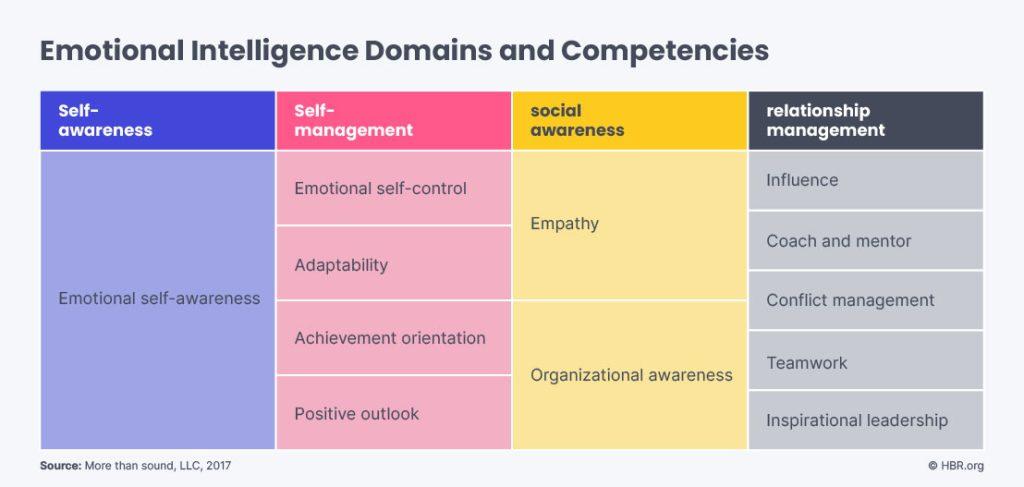The behaviors required to be successful as an individual contributor are almost always different than those required to succeed as a people leader.
Unfortunately, many employees who are promoted to leadership positions don’t receive much–or any—guidance on how to do that well. Not surprisingly, this can lead to a stressful experience for supervisors and managers who are struggling to do a job they’re not fully prepared for, and challenges for their direct reports, who might not feel fully supported.
The changes to work triggered by the pandemic have only made leadership more challenging. Teams that once worked side-by-side in an office and socialized during lunch are increasingly working remotely, which has created new communication, collaboration, and engagement challenges.
And despite a growing focus on reducing employee burnout from employers, the problem persists: in a June 2022 survey conducted by Deloitte, 43% of workers reported being exhausted always or often, 42% said they were stressed, and 35% said they were overwhelmed.
What’s become clear in this complex new world of work is that that being a successful leader requires resilience, flexibility, compassion, and a host of other critical managerial and supervisory skills. In this article, we’ll talk about a few of the skills needed to be a successful leader right now and share practical steps you can take to develop them.

A few critical managerial and supervisory skills
Advancement in leadership used to be based almost exclusively on the ability to assess employee performance.
Leaders relied on a “command-and-control” style, with rigid processes and authoritative communication. But as a 2021 HBR article points out, the focus has changed in recent years to supervisors’ and managers’ ability to coach others—a skillset that requires strong people skills, or “soft skills.”
And because research shows that 70% of team engagement is dependent on the quality of their manager, and 69% of traditional managerial tasks will likely be automated by 2024, soft skills are only becoming more critical.
Here are a few of the most highly valuable soft skills for managers and supervisors:

Communication
Flexible work arrangements are becoming the norm instead of the exception. According to a June 2022 McKinsey study of 25,000 Americans, 58% report now having the opportunity to work from home at least one day a week; 35% report having the option to work remotely 5 days a week; and 87% of respondents said that when given the chance to work flexibly, they take it.
In this new world of work, the ability to communicate effectively with a wide range of employees, whether in person, virtually, in real time, or asynchronously, has never been more important.
Three components of strong communication skills worth focusing on are:
- Adaptability: Not every employee you manage will have the same communication style. Harvard Business School suggests mapping your communication style against those of your team members to know where you need to adapt.
- Listening: In this new era of remote work, being an effective listener is more important than ever. Working virtually can make it harder for managers to pick up on their direct reports’ non-verbal cues—and can sometimes lead to employees feeling isolated, disengaged and less productive as a result. Proactively and frequently setting up one-on-ones and listening effectively during those meetings can help. As Robin Abrahams and Boris Groysberg wrote in HBR recently, “Employers who fail to listen and thoughtfully respond to their people’s concerns will see greater turnover.” To prevent this, Abrahams and Groysberg suggest taking an active listening approach. Active listening involves repeating what is said, offering non-verbal cues that you are listening, minimizing distractions, and asking more questions than you think you need to.
- Clarity: Per The Economist, communication barriers like lack of clarity can lead to low morale, lost sales, and missed performance goals. A good leader must clearly communicate both their expectations and feedback with their team in order to reach individual and company goals.

Organization and planning
Successful managers and supervisors know how to create a vision for their team that nurtures their sense of purpose; draw up a well-thought-out road map for realizing that vision; and navigate the inevitable roadblocks that pop up along the way.
Two competencies that are particularly aligned with success on these fronts are project planning and contingency planning.
Project planning describes the ability of a leader to plan, structure, and order one’s own or direct reports’ work in a way that’s aligned with resources and objectives. Leaders who are strong project planners are more likely to:
- Be skilled at breaking complex goals into distinct, measurable, and attainable components
- Have a clear sense of top priorities and the progress of current tasks
- Be able to foresee what additional work is likely to be on tap next
Contingency planning describes the ability of a leader to solve complicated problems, both in advance of beginning a project—and on the fly. Leaders with strong contingency planning behaviors are more likely to:
- Have a very organized and methodical approach to gathering information relevant to solving a problem.
- Thoughtfully consider a number of different components simultaneously– be it information, different perspectives, or competing solutions—before committing to a course of action

Emotional awareness and adaptability
Some people are introverts, some extroverts. Some love to design processes, some are the “big idea” people. Some are highly sensitive, some are extremely direct. And the list goes on and on.
Leaders who are self-aware about their own emotional tendencies and those of their team—and can adjust the way they manage individual employees as a result—are much more likely to succeed than those who take a one-size-fits-all approach. In other words, what many call emotional intelligence remains a highly valued characteristic in managers and supervisors.
Harvard Business Review’s emotional intelligence (EI) matrix is composed of 12 competencies under the headings of self-awareness, self-management, social awareness, and relationship management, all of which are interrelated. As HBR’s Daniel Goleman and Richard E. Boyatzis note, “In order to excel, leaders need to develop a balance of strengths across the suite of EI competencies. When they do that, excellent business results follow.”

The direct relationship between emotional self-awareness and adaptability illustrates the need for leaders to develop their emotional intelligence skills overall, so that they’re better able to adapt to both the strategic pivots made by their company, and to the unexpected day-to-day changes to the norm (a key employee needing to spend a week at home with a sick child, for example) that pop up when managing a team.

Problem-solving skills
By effectively noticing, defining, and addressing problems, a good leader can guide an organization through tough situations more easily.
Three qualities that correlate strongly with problem-solving skills are:
- Tenacity: Problem-solvers who are tenacious don’t get discouraged by obstacles–they pivot and push forward, staying open to new information in the midst of uncertainty. In an article for Forbes, executive coach Nancy Eberhardt writes that tenacity is “the ultimate skill when it really matters,” and that “it’s the trait that means the difference between failure and success, and that takes their teams from doing all right to thriving.”
- Humility: In the Harvard Business Review article, “The Power of Leaders Who Focus on Solving Problems,” authors Deborah Ancona and Hal Gregersen argue that leaders who truly care about solving problems for their company leave their egos at the door. They’re not looking to solve problems in order to impress others, but rather to make an impact.
- Trust: Whether they’re not getting the insights they need from another team, or struggling to complete an assignment by the deadline, team members will frequently come to management looking for solutions. How you help them solve problems matters. If you help someone quickly and effectively, you’ll be a trusted resource for them moving forward.
The most effective way of evaluating an employee’s problem-solving skills—no matter their job role—is to objectively assess their cognitive ability.

Composure
The past two years have taught us that the only constant is change. So leaders need to be comfortable with uncertainty and maintain their composure when confronted with it.
Three things you can do to maintain composure as a leader include:
- Pausing before acting: When faced with an unexpected situation, it can be tempting to react right away. But a more considered response is usually the better response.
- Finding support: Build a support system of mentors both within and outside your company who share your values and can provide guidance during tough times.
- Dissecting the issue: When a problem seems overwhelming, take the time to break it down into its relevant parts, and prioritize which parts to tackle first.

How to develop your managerial or supervisory skills
Here are a few ways for new managers and supervisors to develop their leadership skills:
#1. Precisely define success for your team
As Brené Brown writes in her book Dare to Lead, “Clear is kind, unclear is unkind.”
Your direct reports want to succeed. But if they’re not sure exactly what’s expected of them, and how their success will be measured—either because you haven’t clarified that for yourself, or you keep changing your mind—they’re likely to feel frustrated, confused, and less motivated to keep giving it their all.
So be as thoughtful and organized as possible both about goal-setting and delivering feedback. Work with your direct reports to set challenging but realistic goals and stick to them as much as possible. Also, strive to be direct but empathetic in the way you deliver feedback.
#2. Create an atmosphere of psychological safety
When your employees feel psychologically safe, they know it’s okay to sometimes make mistakes. And when they understand that they’ll be more likely to try something that challenges them, and ultimately grow on the job.
As Kati Lechner, Director of People Operations and Talent Strategies at Wonderlic points out, clarity about goals and expectations and psychological safety are closely connected.
“When expectations aren’t clear, employees have a hard time feeling safe,” she says. “And when employees don’t feel safe, they may not be willing to try new things, which can stifle their growth.”
#3. Seek out mentorship and coaching
One of the keys to improving as a manager or supervisor is to be humble enough to admit you can’t possibly have all the answers—and to ask for advice and support from other leaders you respect.
Start by identifying people, either within your company or your industry, who you’d consider a potential mentor. Ask them how they’ve tackled some of the challenges you face in your own role. Consider questions like:
- What mistakes did you make early in your career as a people leader?
- How do you make your team feel valued?
- How do you create psychological safety for your team?
- What is your go-to strategy for managing conflict?
- What are your favorite approaches to helping direct reports who might be struggling gain confidence and grow?
In addition to seeking out mentorship, managers can benefit from working directly with a coach, and to develop themselves as a coach to their team as well.
Herminia Ibarra and Anne Scoular note in the Harvard Business Review, “Coaching is no longer just a benevolent form of sharing what you know with somebody less experienced or less senior, although that remains a valuable aspect. It’s also a way of asking questions so as to spark insights in the other person.”
As Sir John Whitmore, an expert in leadership development, defined it, skilled coaching involves “unlocking people’s potential to maximize their own performance. The best practitioners have mastered both parts of the process—imparting knowledge and helping others discover it themselves—and they can artfully do both in different situations.”
This new coaching mindset ties back to the need for emotional intelligence and adaptability in the workplace. Instead of directing an employee to a specific way to do something, coaching invites managers to help their direct reports find the answers themselves, which creates a more empowered workforce.
“Coaching is no longer just a benevolent form of sharing what you know with somebody less experienced or less senior, although that remains a valuable aspect. It’s also a way of asking questions so as to spark insights in the other person.”
– Herminia Ibarra and Anne Scoular
#4. Plug into the best thought leadership…on leadership
Build time into your schedule for checking out content created by experts on managing people. Five respected experts to consider following are:
- Dr. Britt Andreatta: Speaker and author of Wired to Grow, Wired to Resist, and Wired to Connect, Dr. Andreatta is a leader in the learning and development space whose LinkedIn Learning videos have received more than 10 million views. She leverages the latest findings in brain science to help organizations facilitate growth.
- Dr. Adam Grant: Bestselling author of 5 books that have sold millions of copies and been translated into 45 languages: Think Again, Give and Take, Originals, Option B, and Power Moves, organizational psychologist and professor at The Wharton School, host of WorkLife, a chart-topping TED original podcast.
- Dr. Gordy Curphy: Author of Leadership: Enhancing the Lessons of Experience, Dr. Curphy has spent the past 30 years researching, teaching, and providing consulting advice on leadership.
- Dr. Tomas Chamorro-Premuzic: Professor of Business Psychology at Columbia University and author of 10 books including Why Do So Many Incompetent Men Become Leaders?, Chamorro-Premuzic is an international authority on people analytics and leadership development.
- Kathleen Hogan: Chief People Officer and EVP of human resources at Microsoft and the 2021 HR Executive of the year, Kathleen overhauled Microsoft’s culture and frequently speaks on the power of moving from a fixed to a growth mindset within an organization.
“While good management, as it has been defined in the past, is critically important in the day-to-day operation of an organization, it is not enough to help an organization move towards a vision. In the past, managers have been taught to focus on setting goals, planning, motivating employees, and coaching. While all of these activities are important, they are not enough to help managers also be leaders of change.”
– From “The Basics of Managing as a Leader,” MIT Human Resources website
The role of managers and supervisors has changed significantly in the past few years and will continue to evolve. While long-standing management skills such as prioritization, strategy, and evaluation are still relevant, they are no longer enough.
Leaders who want to be successful in years to come need to focus just as much on communicating well, leading with empathy, providing occasional coaching, and being nimble enough to change course with confidence as the future of work continues to evolve.







